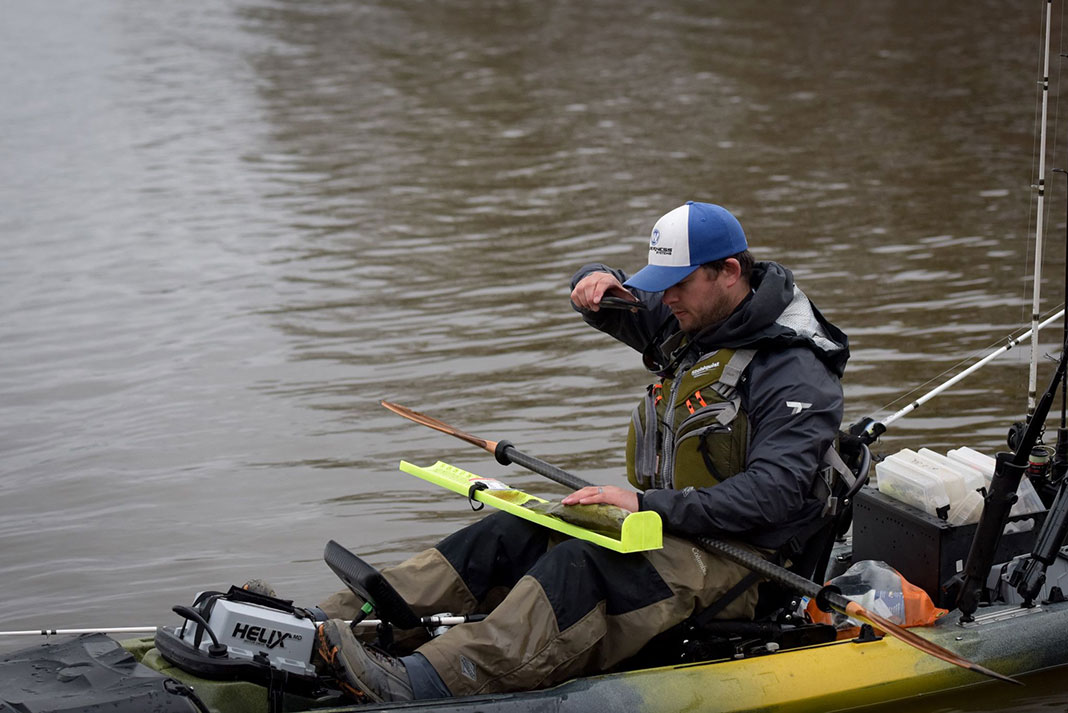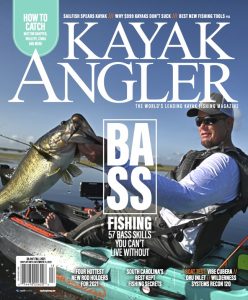Products You May Like
As part of my constant research, I watch a lot of fishing shows. Reclined in my Barca lounger in front of the flat screen while enjoying a cold beverage and handy snacks is hard work. But, mastering the sport requires sacrifices. A recent episode of Jarrett Edwards Outdoors inspired me to revisit the weighty topic of measuring fish to determine their size.
How to Measure Fish Size the Right Way
While fishing for trout with a guide on a lake in Colorado, Edwards hooked a bonus pike. The guide commented that pike up to 30 pounds had been caught in the lake. Once Edwards released the fish, he asked the follow-up question, “Thirty pounds, how big is that?”
Just like Jarrett Edwards, anglers need a common form of measurement to communicate the significance of their catch. Some fish are commonly measured in weight while other species are recorded with length.
Photographic evidence is not a reliable source of communicating a fish’s size. Thanks in part to the despicable practice of the exaggerated, extended-arm pose, a photo is not worth a thousand words when it comes to bragging rights.
Unfortunately, society has labeled anglers as liars. We tell fish stories, white lies that only serve to inappropriately inflate our ego. Heck, even prehistoric cave drawings of Pleistocene catches were met with unibrows furrowed in skepticism.
So, what do we measure: length or weight?
Fishing Records, Rules and Regulations
When it comes to fisheries regulations, size limits are always stated in length. However, record fish are almost always determined by weight. Which would you rather catch, a 21-inch largemouth bass or a five-pound piggy? There is a reason Robert Earl Keen’s classic country song “Five Pound Bass” isn’t titled “21-inch Bass.”

Still, kayak fishing tournaments rely on length to determine the best angler. Competitors fight for an eighth of an inch and celebrate a 100-inch stringer.
Which would you rather catch,
a 21-inch largemouth bass or a five-pound piggy?
On the other hand, motorboat bass tournaments take great effort to keep their fish alive. At the end of the day, the fish are weighted in front of a crowd of fans. I guess following the live feed on a tournament app isn’t as big a draw.
Handle Your Catch With Care
Some of this comes down to how the fish is handled. Largemouth bass don’t have sharp teeth, so they are easy to lift and weigh. Catfish have a strong bite but no teeth, so a 40-inch fish is big but a true trophy is 30 pounds. Indeed, outdoor writer Keith “Catfish” Sutton believes, “worthy catches always are measured by weight.”
On the other hand, lipping a walleye, pike or muskie would likely mean considerable blood loss. Anglers who fish for toothy fish carry a tape measure.
Of course, fly anglers throw a wrench into the equation. With their two-pound tippets, four-weight rods, and dainty lures made of feathers, the trout crowd seems more appreciative of things that are light. Depending on the circumstances, a five-inch native brook trout may be deemed a greater trophy than a 14-inch stocked rainbow trout.

Raised in the south, I now live in the north. So, I’m a weight guy that is gradually appreciating length. I doubt I’ll ever fully abandon the pure satisfaction from lifting a heavy fish and estimating it weighs seven pounds, but I have to admit some benefits to the cold hard truth of length.
Length is Often a Better Benchmark
One advantage, I don’t need a scale to measure length. Using an equation of length and girth, I can estimate a fish’s weight. Or, I can scratch a mark in my kayak to measure later.
For example, my buddy recently caught a big muskie. Prior to the release, he momentarily positioned the fish alongside carved notches in his kayak and exclaimed, “This is the length to beat!”
Plus, once a fish achieves a length, it doesn’t shrink. Weight, on the other hand, can fluctuate greatly due to factors such as available forage or spawning. Another advantage of using the length standard: when I’m telling the fish story to friends, I can communicate the significance of my catch by holding my hands apart to indicate the fish’s size. Honestly, of course.

This article was first published in Kayak Angler Issue 46. Subscribe to Kayak Angler and get the magazine delivered to your front door. Download the Kayak Angler Magazine+ app to seamlessly glide between the digital archives, the latest articles and videos.
Determining the best way to measure a fish is a weighty (and lengthy) topic. | Feature photo: Courtesy of Vibe Kayaks
